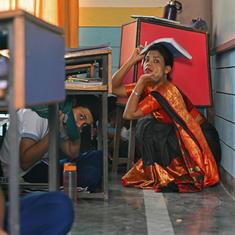Google has rolled out one of the world’s largest public Wi-Fi projects in India.
On January 22, the busy Mumbai Central station in India’s financial capital became the country’s first railway stop to provide free high-speed public Wi-Fi to passengers. With 400 more such railway stations expected to roll out similar services, millions of Indians in transit are now expected to have access to free high-speed internet.
By the end of 2016, Google plans to launch the services at 100 of India’s busiest railway stations.
Google, along with other global IT giants, including Facebook and Microsoft, have been actively tapping into the Indian market. By June 2016, Asia’s third-largest economy is expected to have some 426 million users online by June 2016. In 2015, the CEOs of all these companies had even visited India and laid out their aggressive plans to push their services, particularly in rural India to boost their usage – and, in turn, revenues.
“Even with just the first 100 stations online, this project will make Wi-Fi available to millions of Indians – who pass through railway stations every day, making it the largest public Wi-Fi project in India and among the largest in the world by number of potential users,” a Google statement said.
Google has partnered with RailTel, Indian Railways’ telecom wing, which had earlier laid out more than 45,000km of optic fibre network across the country. The company hasn’t disclosed its investment for the project yet. “Unfortunately we do not talk about investments by projects,” a spokesperson for Google told Quartz.
For now, access to high-speed internet will be restricted to an hour, after which the speed will come down, according to Gulzar Anand, who heads the access programs at Google. The company is yet to define the average speed of the services. Currently, India has one of the slowest internet connectivity in the world.
Eventually, though, consumers could be charged for the data services, once they exhaust the free usage. According to the Google spokesperson, RailTel, is currently “exploring options at this stage to understand usage and arrive at revenue models which will make the service sustainable and may be even expanded beyond 400 stations”.
The decision to provide free Wi-Fi was taken last September, when India’s prime minister Narendra Modi visited the IT giant’s headquarters in Mountain View, California.
This article was originally published on qz.com











